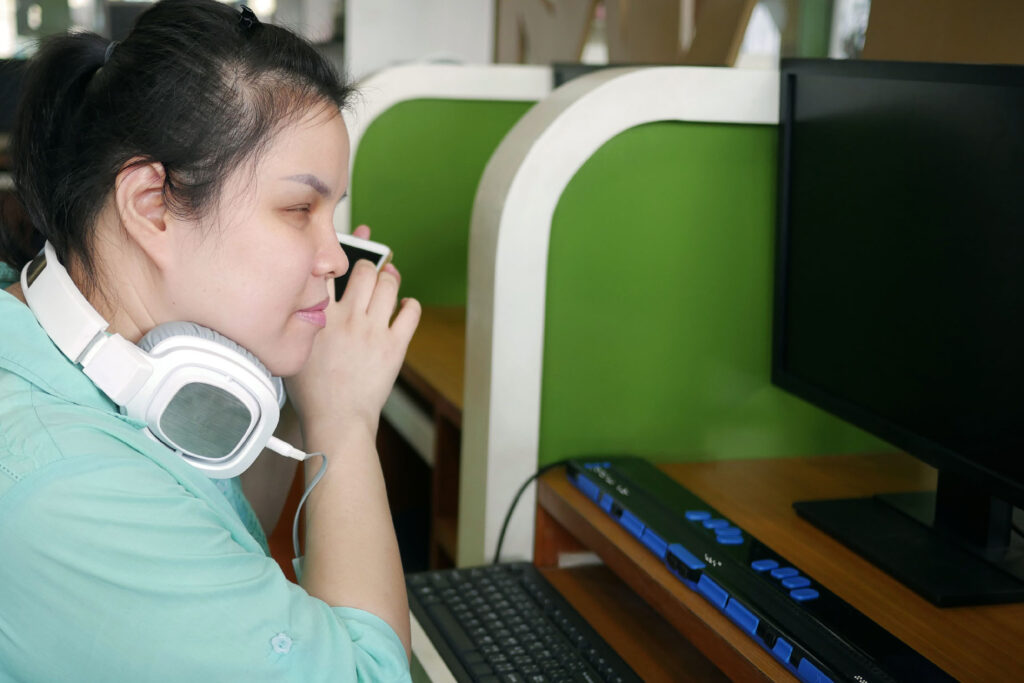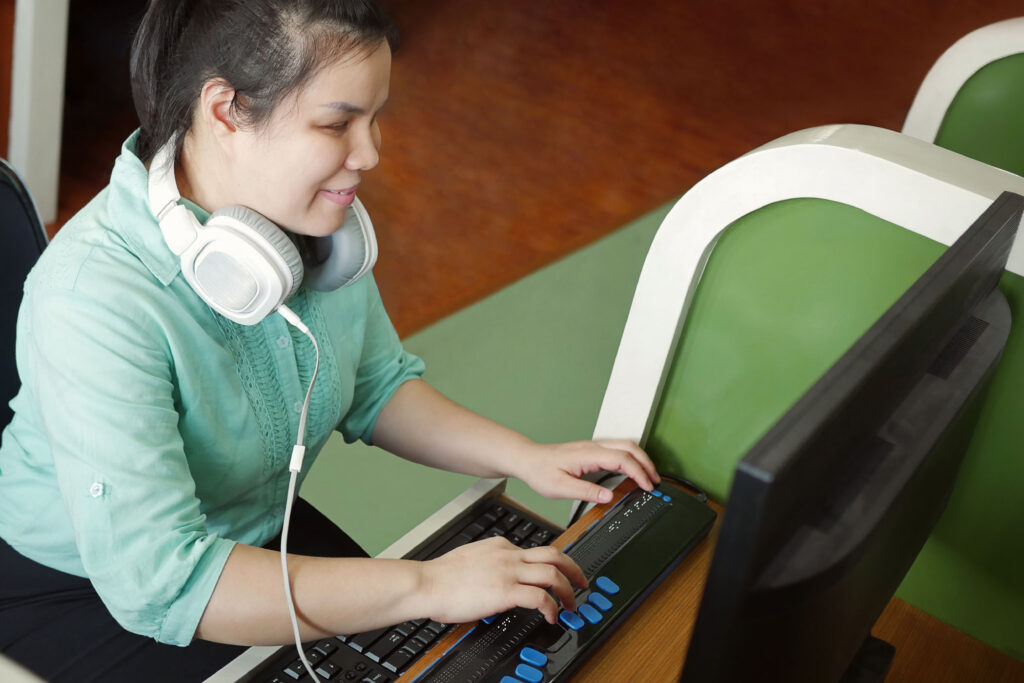Assistive technology is redefining what is possible for people with a wide range of cognitive and physical disabilities. In the home, classroom, workplace, and community, assistive technology is enabling individuals with disabilities to be more independent, self-confident, productive, and better integrated into the mainstream.
What is Assistive Technology?

According to the National Education Association (NEA), the number of U.S. students enrolled in special education programs has risen 30 percent over the past 10 years. Additionally, the NEA reports that nearly every general education classroom in the country includes students with disabilities, as three out of every four students with disabilities spends part or all of their school day in a general education classroom.
One tool to help students with disabilities even in the face of a special education teacher shortage is assistive technology. Today, assistive technology can help students with certain disabilities learn more effectively. Ranging in sophistication from “low” technologies such as a graphic organizer worksheet to “high” technologies including cutting-edge software and smartphone apps, assistive technology is a growing and dynamic field. Several areas of assistive technology and sample products may be found in any given classroom, making a difference in how students of all abilities learn. Take a look at the different types of assistive technology tools listed below.
5 Assistive Technology Tools Making a Difference
- Text to Speech
As an assistive technology, text-to-speech (TTS) software is designed to help children who have difficulties reading standard print. Common print disabilities can include blindness, dyslexia or any type of visual impairment, learning disability or other physical condition that impedes the ability to read. However, other students can benefit from TTS technology, such as children that have autism, attention deficit hyperactivity disorder (ADHD) or an intellectual disability. The technology works by scanning and then reading the words to the student in a synthesized voice, using a large number of speech sounds that make up words in any given context. With the advances in speech synthesis, TTS technology is more accurate and lifelike than ever.
- Graphic Organizers
Graphic organizers can be effective in helping students organize their thoughts during the writing process. As an assistive technology, graphic organizers can be a strong choice for students with dysgraphia or disorders of written expressions — particularly the conceptual aspects of writing. Graphic organizers work by helping the student map out a course of action. Depending on the type of writing, the graphic organizer can prompt the writer to describe an object, chart out a course of events or perform some other task that can help in planning the piece. Graphic organizers vary by type and technological sophistication.
- Assistive Listening Systems
A variety of assistive listening systems, or hearing assistive technology, can help students who are deaf or hard of hearing, as well as those with other auditory and learning problems. According to the National Association for the Deaf, assistive listening systems can be used to enhance the reach and effectiveness of hearing aids and cochlear implants, or by children who do not need those tools but still need help hearing. Assistive listening systems use a microphone, a type of transmission technology and a device for capturing and bringing the sound to the ear. The specific transmission technology used in the system is typically what contrasts one type of assistive listening system from another.
- Sip-and-Puff Systems
Sip-and-puff systems are used by students who have mobility challenges, such as paralysis and fine motor skill disabilities. These systems allow for control of a computer, mobile device or some other technological application by the child moving the device with his or her mouth. Similar to a joystick, the child can move the controller in any direction and click on various navigational tools using either a sip or a puff. An on-screen keyboard allows the child to type using the same movements. Sip-and-puff systems are a type of switch device, which refers to the technology used to replace a computer keyboard or mouse. Other switch devices include buttons or other objects that a student can touch, push, pull, kick or perform some other simple action that can then control the device.
- Proofreading Software
Proofreading software is a branch of assistive technology that goes above and beyond the typical proofreading features found in a word processing system, such as correcting words frequently misspelled by students with dyslexia. A number of other features offered within this category can help students work on his or her English skill set to become a more effective and accurate writer. Although primarily geared towards individuals with dyslexia, proofreading software can be helpful to those with any type of learning disorder that makes writing and reading challenging.
Thanks to the rapid advances in assistive technology tools, students, parents, and teachers have a seemingly limitless number of tools at their disposal. As these tools start to appear in the home and in the classroom, parents and teachers can utilize them for students’ academic and personal growth. But technology alone is not enough – to successfully use these tools, it’s critical to develop a plan for their use and have regular check-ins to ensure the student is gaining the most value possible and not becoming overly reliant on these tools.

